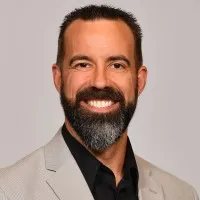PreSales Collective SE Spotlight column aims to provide education and insight while highlighting SEs from the community doing amazing things.
__________________________________________________________________________________
There are many people, situations, mantras, and opportunities that have influenced my career in various ways over the years. If push came to shove though I would have to say that the guiding principle that has helped me the most would be “How can I have the biggest impact?”. The two primary components of Impact that we'll focus on today are, internal (the impact on colleagues and teammates) and external (the impact on prospects and customers). First we'll look at internal impact and then we can look at external.
Whether you are a new employee or a seasoned veteran, there are always opportunities to have a positive internal impact on your colleagues and your organization. I personally gravitate towards analyzing and building better processes around enablement, but the opportunities for growth and knowledge sharing are endless if you are willing to open yourself up to them. If you are looking to create more opportunities for yourself, then consider the following themes.
- Be (pro)active - get out there. Volunteer for as many things as you can handle and feel comfortable with. Once you make a name for yourself as being someone reliable that others can go to for help, it will continue to pay dividends for you down the road.
- Use the tools available to you to communicate with others. Introduce yourself. Schedule time to talk. Learn about what others do. Ask lots of questions. All the time. Of everyone. Being professionally curious is critical to continued personal growth.
- Be an advocate for yourself. There is a line here of being overtly ‘all about me’ but I do think it's important to not shy away from standing up for and articulating the impact you are having. People are busy and may not always realize the projects you're working on so don’t be shy about sharing. This is doubly true as many workforces have made the switch to remote or WFH scenarios.
I've applied these themes across a variety of enablement/training projects, which has afforded me the opportunity to work extensively with my leadership team to refine content and processes. Content and process creation/refinement is ALWAYS an opportunity to collaborate with others and ultimately have a large long-tail impact. If you're looking for areas that you might be able to influence consider the following: onboarding, competitive intelligence, demo best practices, general industry knowledge, and demo environments/flow, SC/AE relationship building, etc.
The common thread throughout all of this is people. People coming together to share knowledge, contribute to projects, and create a better experience for your organization. So if you are looking to establish better relationships within your team (or better yet - go cross-functional!!) then ask yourself what type of impact you can have.
Now to the flip side of the coin, the external impact. We in the PreSales community are the tip of the spear and have an amazing opportunity to work with our sales/product/marketing/IT/executive counterparts to craft THE BEST possible experience for our prospects and customers. We are in an incredibly unique position to be value advisors/consultants and with the proper planning and execution, can drastically increase the positivity of the customer experience. Here are some of the top things that I think about and do as I prepare my customer-facing engagements:
- Who is the prospect/customer?
- What is their business model? What products/services do they sell?
- Who do they sell them to? What personas are they targeting?
- Do they have case studies I can tie back to? Do I have case studies and stats that are relevant to them?
- What pain are they trying to fix or avoid? Have they quantified this pain?
- How can I map product value to solve for this pain?
- What are their goals? How do they plan to measure the attainment of those goals?
- How can I introduce value to showcase the ability to attain that goal?
All of this comes together into the ’story’. It’s important that your story is new every single time you deliver it. If you find yourself giving the same demo every time then there’s a problem. The story needs to adapt to your buyer. You should be using their terminology, their customers, their product names, their goals, their pains in order to create a unique demonstration that not only highlights the value that you provide but also assures them that you know exactly who they are and what they are trying to accomplish. That's not to say you aren’t showing the same ‘features’ in your platform/tool/service but the importance of value selling is that your not talking about this feature or that feature, your crafting a journey that shows them how they can drive more of ABC Persona into their funnel so that they end up with more John Smith’s from XYZ Company (who by the way is their marquee customer that they display in their own case studies).
This type of storytelling is a group effort and must be prepared for by everyone involved with the deal process. Primarily we will be engaged with the Sales team and its critically important to nurture that relationship so that you are all prepared and choreographed every single time. Executing on all of this well will yield better customer engagements that will hopefully turn into bigger deals that move through the funnel faster. When you start to do this time and time again you will also be creating a reputation and brand for yourself as a ‘go-to person’, which ultimately will open up more doors and opportunities for you down the road.
While some of this may seem rather obvious and mundane, I find it helpful to make the conscious effort to think about these types of things on a regular basis in order to stay sharp. Sometimes I don’t even realize that I’ve started to drift off point until I take the time to self-reflect and come back to the basics of what I know I need to do. There’s a healthy balance to be struck between internal and external impact but I know that a healthy mix of both will allow me to continue to grow in ways I can’t yet see.
So, what kind of impact are you going to have?

Travis is a Senior Solutions Consultant at Adobe (formerly Marketo) and contributor for PreSales Collective.
Connect with Travis on Linkedin.
PreSales Collective SE Spotlight column aims to provide education and insight while highlighting SEs from the community doing amazing things.
__________________________________________________________________________________
There are many people, situations, mantras, and opportunities that have influenced my career in various ways over the years. If push came to shove though I would have to say that the guiding principle that has helped me the most would be “How can I have the biggest impact?”. The two primary components of Impact that we'll focus on today are, internal (the impact on colleagues and teammates) and external (the impact on prospects and customers). First we'll look at internal impact and then we can look at external.
Whether you are a new employee or a seasoned veteran, there are always opportunities to have a positive internal impact on your colleagues and your organization. I personally gravitate towards analyzing and building better processes around enablement, but the opportunities for growth and knowledge sharing are endless if you are willing to open yourself up to them. If you are looking to create more opportunities for yourself, then consider the following themes.
- Be (pro)active - get out there. Volunteer for as many things as you can handle and feel comfortable with. Once you make a name for yourself as being someone reliable that others can go to for help, it will continue to pay dividends for you down the road.
- Use the tools available to you to communicate with others. Introduce yourself. Schedule time to talk. Learn about what others do. Ask lots of questions. All the time. Of everyone. Being professionally curious is critical to continued personal growth.
- Be an advocate for yourself. There is a line here of being overtly ‘all about me’ but I do think it's important to not shy away from standing up for and articulating the impact you are having. People are busy and may not always realize the projects you're working on so don’t be shy about sharing. This is doubly true as many workforces have made the switch to remote or WFH scenarios.
I've applied these themes across a variety of enablement/training projects, which has afforded me the opportunity to work extensively with my leadership team to refine content and processes. Content and process creation/refinement is ALWAYS an opportunity to collaborate with others and ultimately have a large long-tail impact. If you're looking for areas that you might be able to influence consider the following: onboarding, competitive intelligence, demo best practices, general industry knowledge, and demo environments/flow, SC/AE relationship building, etc.
The common thread throughout all of this is people. People coming together to share knowledge, contribute to projects, and create a better experience for your organization. So if you are looking to establish better relationships within your team (or better yet - go cross-functional!!) then ask yourself what type of impact you can have.
Now to the flip side of the coin, the external impact. We in the PreSales community are the tip of the spear and have an amazing opportunity to work with our sales/product/marketing/IT/executive counterparts to craft THE BEST possible experience for our prospects and customers. We are in an incredibly unique position to be value advisors/consultants and with the proper planning and execution, can drastically increase the positivity of the customer experience. Here are some of the top things that I think about and do as I prepare my customer-facing engagements:
- Who is the prospect/customer?
- What is their business model? What products/services do they sell?
- Who do they sell them to? What personas are they targeting?
- Do they have case studies I can tie back to? Do I have case studies and stats that are relevant to them?
- What pain are they trying to fix or avoid? Have they quantified this pain?
- How can I map product value to solve for this pain?
- What are their goals? How do they plan to measure the attainment of those goals?
- How can I introduce value to showcase the ability to attain that goal?
All of this comes together into the ’story’. It’s important that your story is new every single time you deliver it. If you find yourself giving the same demo every time then there’s a problem. The story needs to adapt to your buyer. You should be using their terminology, their customers, their product names, their goals, their pains in order to create a unique demonstration that not only highlights the value that you provide but also assures them that you know exactly who they are and what they are trying to accomplish. That's not to say you aren’t showing the same ‘features’ in your platform/tool/service but the importance of value selling is that your not talking about this feature or that feature, your crafting a journey that shows them how they can drive more of ABC Persona into their funnel so that they end up with more John Smith’s from XYZ Company (who by the way is their marquee customer that they display in their own case studies).
This type of storytelling is a group effort and must be prepared for by everyone involved with the deal process. Primarily we will be engaged with the Sales team and its critically important to nurture that relationship so that you are all prepared and choreographed every single time. Executing on all of this well will yield better customer engagements that will hopefully turn into bigger deals that move through the funnel faster. When you start to do this time and time again you will also be creating a reputation and brand for yourself as a ‘go-to person’, which ultimately will open up more doors and opportunities for you down the road.
While some of this may seem rather obvious and mundane, I find it helpful to make the conscious effort to think about these types of things on a regular basis in order to stay sharp. Sometimes I don’t even realize that I’ve started to drift off point until I take the time to self-reflect and come back to the basics of what I know I need to do. There’s a healthy balance to be struck between internal and external impact but I know that a healthy mix of both will allow me to continue to grow in ways I can’t yet see.
So, what kind of impact are you going to have?

Travis is a Senior Solutions Consultant at Adobe (formerly Marketo) and contributor for PreSales Collective.
Connect with Travis on Linkedin.
PreSales Collective SE Spotlight column aims to provide education and insight while highlighting SEs from the community doing amazing things.
__________________________________________________________________________________
There are many people, situations, mantras, and opportunities that have influenced my career in various ways over the years. If push came to shove though I would have to say that the guiding principle that has helped me the most would be “How can I have the biggest impact?”. The two primary components of Impact that we'll focus on today are, internal (the impact on colleagues and teammates) and external (the impact on prospects and customers). First we'll look at internal impact and then we can look at external.
Whether you are a new employee or a seasoned veteran, there are always opportunities to have a positive internal impact on your colleagues and your organization. I personally gravitate towards analyzing and building better processes around enablement, but the opportunities for growth and knowledge sharing are endless if you are willing to open yourself up to them. If you are looking to create more opportunities for yourself, then consider the following themes.
- Be (pro)active - get out there. Volunteer for as many things as you can handle and feel comfortable with. Once you make a name for yourself as being someone reliable that others can go to for help, it will continue to pay dividends for you down the road.
- Use the tools available to you to communicate with others. Introduce yourself. Schedule time to talk. Learn about what others do. Ask lots of questions. All the time. Of everyone. Being professionally curious is critical to continued personal growth.
- Be an advocate for yourself. There is a line here of being overtly ‘all about me’ but I do think it's important to not shy away from standing up for and articulating the impact you are having. People are busy and may not always realize the projects you're working on so don’t be shy about sharing. This is doubly true as many workforces have made the switch to remote or WFH scenarios.
I've applied these themes across a variety of enablement/training projects, which has afforded me the opportunity to work extensively with my leadership team to refine content and processes. Content and process creation/refinement is ALWAYS an opportunity to collaborate with others and ultimately have a large long-tail impact. If you're looking for areas that you might be able to influence consider the following: onboarding, competitive intelligence, demo best practices, general industry knowledge, and demo environments/flow, SC/AE relationship building, etc.
The common thread throughout all of this is people. People coming together to share knowledge, contribute to projects, and create a better experience for your organization. So if you are looking to establish better relationships within your team (or better yet - go cross-functional!!) then ask yourself what type of impact you can have.
Now to the flip side of the coin, the external impact. We in the PreSales community are the tip of the spear and have an amazing opportunity to work with our sales/product/marketing/IT/executive counterparts to craft THE BEST possible experience for our prospects and customers. We are in an incredibly unique position to be value advisors/consultants and with the proper planning and execution, can drastically increase the positivity of the customer experience. Here are some of the top things that I think about and do as I prepare my customer-facing engagements:
- Who is the prospect/customer?
- What is their business model? What products/services do they sell?
- Who do they sell them to? What personas are they targeting?
- Do they have case studies I can tie back to? Do I have case studies and stats that are relevant to them?
- What pain are they trying to fix or avoid? Have they quantified this pain?
- How can I map product value to solve for this pain?
- What are their goals? How do they plan to measure the attainment of those goals?
- How can I introduce value to showcase the ability to attain that goal?
All of this comes together into the ’story’. It’s important that your story is new every single time you deliver it. If you find yourself giving the same demo every time then there’s a problem. The story needs to adapt to your buyer. You should be using their terminology, their customers, their product names, their goals, their pains in order to create a unique demonstration that not only highlights the value that you provide but also assures them that you know exactly who they are and what they are trying to accomplish. That's not to say you aren’t showing the same ‘features’ in your platform/tool/service but the importance of value selling is that your not talking about this feature or that feature, your crafting a journey that shows them how they can drive more of ABC Persona into their funnel so that they end up with more John Smith’s from XYZ Company (who by the way is their marquee customer that they display in their own case studies).
This type of storytelling is a group effort and must be prepared for by everyone involved with the deal process. Primarily we will be engaged with the Sales team and its critically important to nurture that relationship so that you are all prepared and choreographed every single time. Executing on all of this well will yield better customer engagements that will hopefully turn into bigger deals that move through the funnel faster. When you start to do this time and time again you will also be creating a reputation and brand for yourself as a ‘go-to person’, which ultimately will open up more doors and opportunities for you down the road.
While some of this may seem rather obvious and mundane, I find it helpful to make the conscious effort to think about these types of things on a regular basis in order to stay sharp. Sometimes I don’t even realize that I’ve started to drift off point until I take the time to self-reflect and come back to the basics of what I know I need to do. There’s a healthy balance to be struck between internal and external impact but I know that a healthy mix of both will allow me to continue to grow in ways I can’t yet see.
So, what kind of impact are you going to have?

Travis is a Senior Solutions Consultant at Adobe (formerly Marketo) and contributor for PreSales Collective.
Connect with Travis on Linkedin.






.webp)


